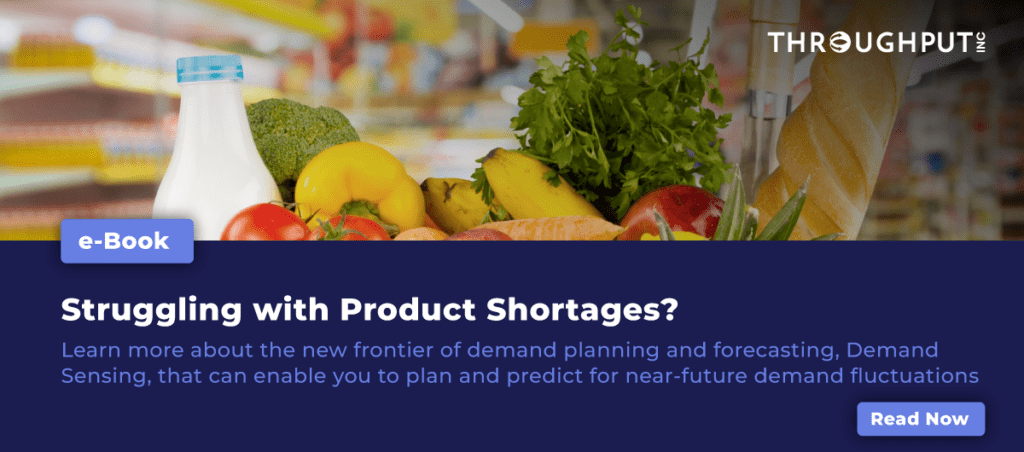Imagine a scenario where a leading retailer experiences a sudden, unanticipated surge in demand for a product due to a viral social media trend. The retailer, caught off guard, faces stockouts, missed sales opportunities, and disgruntled customers.
This scenario underscores the critical role of demand forecasting in supply chain management—a predictive tool designed to anticipate customer demand.
The impact of demand forecasting is far-reaching, influencing inventory management, production planning, and distribution strategies.
However, the volatile market and consumer behavior make demand forecasting complex and challenging. Businesses must navigate these challenges adeptly to maintain competitiveness and profitability in an ever-changing marketplace.
Stick with this blog post as we’ll explain and describe the most common demand forecasting challenges, as well as their root causes.
Why is Demand Forecasting Difficult?
Demand forecasting is difficult due to consumer behavior’s ever-evolving nature. Trends can shift overnight, influenced by many factors, including the latest social media buzz, making it challenging to predict future demand accurately.
For instance, a celebrity endorsement could suddenly elevate a product’s popularity, leading to a rapid increase in demand that traditional forecasting methods may not anticipate.
External factors such as economic fluctuations, political events, and seasonal variations further complicate demand forecasting. These elements can have profound and unpredictable effects on consumer purchasing patterns.
For example, an economic downturn may reduce consumer spending, while a political event could disrupt supply chains, affecting demand in unforeseen ways.
Traditional forecasting methods often need help to account for these influences’ multifaceted and unpredictable nature, highlighting the need for more sophisticated forecasting approaches.

What Are Demand Forecasting Challenges?
Demand forecasting challenges are the presence of data silos, lack of real-time data, integrating qualitative information, scalability and balancing inventory with service levels.
The most significant challenge in demand forecasting is the presence of data silos within organizations. When departments operate in isolation, the data they collect remains confined to their silos, leading to a fragmented view of demand.
This lack of data integration can result in misaligned strategies across departments, such as marketing campaigns that do not align with inventory levels, ultimately affecting the accuracy of demand forecasts.
We’ll explain the other major forecasting challenges below.
Challenge 1: Integrating Qualitative Data into Demand Forecasts
Another challenge is integrating qualitative data into demand forecasts. Brand perception and customer sentiment can heavily influence demand but are challenging to quantify.
For instance, a negative product review going viral can lead to a sudden drop in demand, a qualitative factor that traditional forecasting methods may not capture.
Incorporating such subjective data into demand forecasts remains a complex task, yet it is crucial for creating a complete and accurate demand picture.
Challenge 2: Lack of Real-time Data
The lack of real-time data further exacerbates the challenges in demand forecasting. Without access to real-time data, businesses struggle to respond swiftly to market changes, leading to missed opportunities and inefficiencies.
Real-time data enables organizations to detect and react to demand signals as they occur, allowing for more dynamic and responsive supply chain management. However, many businesses still rely on historical data and periodic reporting, which may not accurately reflect current market conditions.
This delay in data acquisition and analysis can result in inventory mismatches, either through overstocking due to overestimation of demand or stockouts and lost sales due to underestimation.
Challenge 3: Balancing Inventory with Service Levels
Balancing inventory with service levels presents another perennial challenge in demand forecasting.
Achieving the optimal balance between maintaining sufficient inventory levels and ensuring high service levels is crucial for customer satisfaction and business success.
However, this balance is challenging to achieve, with the risk of overstocking or stockouts always looming. Overstocking ties up capital in unsold inventory and increases holding costs, while stockouts can lead to lost sales and damage to brand reputation.
Businesses must carefully forecast demand to minimize these risks, but the inherent uncertainties in demand forecasting make this a complex and ongoing challenge.
Challenge 4: Scalability
Scalability is a critical issue for demand forecasting as businesses grow and market conditions evolve. Forecasting models must adapt to remain relevant and practical, posing significant challenges in terms of scalability and flexibility.
As a business expands its product lines, enters new markets, or experiences seasonal fluctuations, its demand forecasting needs change.
Scalable forecasting solutions must accommodate these changes, ensuring that businesses can continue to forecast demand accurately across different scenarios.
However, developing and maintaining scalable forecasting models requires significant investment in technology and expertise, which can be a barrier for many organizations.

What are the Benefits of AI in Solving Challenges in Demand Forecasting?
The benefits of AI in solving challenges in demand forecasting are AI’s advanced pattern recognition capabilities, AI’s adaptability and scalability, accurate forecasting models and real-time insights.
AI’s advanced pattern recognition capabilities significantly enhance the accuracy of demand forecasts. AI algorithms analyze vast historical data, and can detect subtle demand signals that may elude traditional analysis.
For example, AI can identify correlations between weather patterns and product sales, enabling businesses to anticipate demand spikes for certain items during specific weather conditions.
This ability to process and analyze large datasets allows AI to uncover patterns and trends that are not immediately apparent, providing a more nuanced understanding of demand drivers.
AI solutions also offer adaptability and scalability, which are crucial for evolving businesses. As companies grow or enter new markets, AI systems can adjust to new data streams, learning from past forecasting errors to improve future predictions.
This adaptability ensures that the forecasting process remains relevant and accurate, regardless of changes in the business landscape.
The scalability of AI solutions means they can handle increasing amounts of data and complexity without a corresponding increase in analysis time or resources required, making them ideal for businesses experiencing rapid growth or undergoing significant changes.
One of the most significant advantages of AI-powered forecasting models is their ability to provide real-time insights. In today’s fast-paced market environment, reacting quickly to changes can be a critical competitive advantage.
AI models can analyze data as it becomes available, updating forecasts in real-time to reflect the latest market conditions. This capability allows businesses to make informed decisions more quickly, responding to opportunities and challenges.
For instance, if an unexpected event causes a sudden change in consumer behavior, AI models can immediately adjust forecasts, enabling businesses to respond proactively rather than reactively.
AI’s Continuous Learning Process
AI-based demand forecasting solutions are inherently designed for continuous learning and improvement. They are not static models; they evolve as they are exposed to new data.
This continuous learning process means that AI forecasting models become more accurate and reliable with each prediction cycle. They can identify and correct their forecasting errors, learning from past mistakes to improve future accuracy.
This aspect of AI technology ensures that businesses are not just relying on historical data but are also incorporating the latest information and trends into their forecasting models.
As a result, companies can stay ahead of the curve, adapting their strategies to meet the market’s ever-changing demands.
What is a Real-life Example of a Demand Forecasting Challenge?
An example of a demand forecasting challenge is Nike’s sportswear and equipment demand forecasting challenge.
As one of the world’s leading sports apparel and footwear brands, Nike must stay ahead when predicting and meeting demand in a rapidly changing global marketplace. With a wide range of products sold in multiple countries, accurate forecasting is essential for optimizing production and distribution.
How Nike solved its demand forecasting challenges?
Nike implemented a cutting-edge demand-sensing solution that leverages data from various sources to more accurately predict short-term demand, solving their challenge.
Combining sales and marketing data with external market trends enhanced Nike’s machine learning algorithms to the point where they can analyze and interpret this information in real time, generating more accurate forecasts and insights into customer behavior.
This allows the company to respond more quickly to market changes, reducing the risk of stockouts or excess inventory that can impact profitability.
The benefits of this approach are clear – using demand sensing to optimize production and distribution, helped Nike reduce inventory levels and improved profitability.
Overall, Nike’s implementation of demand sensing is an excellent example of how data-driven insights can help companies stay ahead of the curve in a rapidly evolving marketplace.
Leveraging the power of machine learning and real-time analytics helped Nike make more informed decisions that benefit both the company and its customers.
Demand sensing will likely become essential for any business that wants to thrive in the global marketplace as the world continues to change ever-increasingly.

Solving Demand Forecasting Challenges with Throughput
ThroughPut AI revolutionizes demand planning and forecasting with its innovative Demand Sensing technology, harnessing artificial intelligence’s capabilities.
This method enables precise short-term customer demand predictions, providing the flexibility to adapt quickly to market changes.
ThroughPut AI integrates existing historical data with additional external factors such as weather and seasonal trends, so users are offered a clearer projection of imminent customer demand.
This advanced approach surpasses conventional forecasting tools by not only sensing demand but also delivering strategic recommendations to effectively prepare for anticipated demand needs.
Book a demo to tackle demand forecasting challenges with Throughput.


